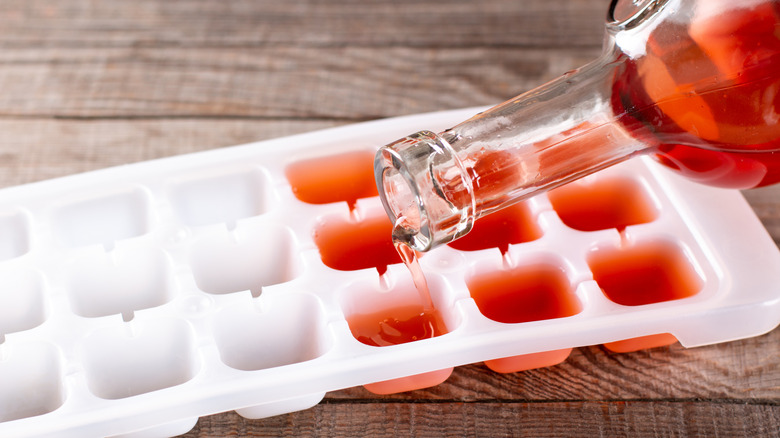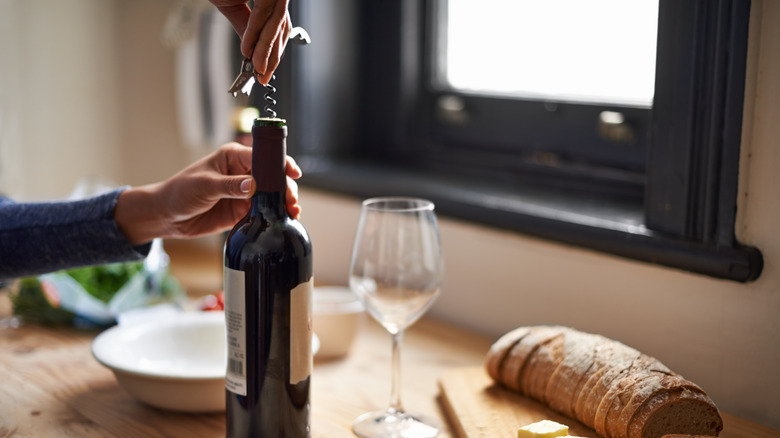How To Freeze Leftover Wine To Amp Up Your Meals Later
Sometimes it's difficult to finish a whole bottle of wine before it starts to oxidize, especially if you live alone. Maybe you make a mental note to use it later in the week in a recipe, but inevitably it sits on the counter for weeks, maybe months, gathering dust. Even if storage hacks are used to extend the wine's life, eventually, that portion of unused wine gets dumped down the sink. There's a solution to using up every drop, and it's as easy as making ice cubes.
High percentage alcohol does not freeze, but because wine has lower alcohol content, it can actually freeze. Due to the presence of alcohol, it won't be as solid as, say, an ice cube made from water. To freeze wine for later use, simply pour the extra wine into an ice cube tray. It will take a few hours to freeze, and then can be stored in a plastic bag or sealed container where it will last up to three months.
Any type of wine can be frozen for later use — red, white, rosé, or champagne. With champagne or any other sparkling wine, the carbonation won't keep after being frozen and then defrosted. If you're using the wine ice cubes for cooking, they can be added directly into the pot or pan and will melt quickly. If you feel like you need exact measurements, the wine ice cubes can first be defrosted and then measured out precisely.
When to use frozen wine cubes
If you're pondering whether or not you can drink defrosted wine ice cubes, the answer is both yes and no. If you defrost the ice cubes to make a glass of wine to sip on, the flavor will inevitably have been changed, and it won't make for a tasty glass of vino. However, if you want to use the ice cubes to make a frozen wine slushie drink, this is an excellent application for the wine ice cubes. Or it can be used as ice cubes for cocktails that use wine, like sangria or an Aperol Spritz. Water-based ice cubes can quickly dilute your cocktail, while wine-based ice cubes make a stronger drink over time.
Wine has a wide variety of applications in cooking, ranging from hearty meat dishes to delicate desserts. The addition of wine of course provides a new layer of flavor, but also acidity. This acidity helps break down fats and proteins, making for tender meat and seafood. Red wines are typically used in red meat dishes, stews, mushroom dishes, and desserts like poached apples and pears. White is great for risotto, light herbal sauces, vegetable-forward dishes, and seafood. While not the typical choice, rosé is nice for making syrups and adding to fruit-forward desserts, while champagne can be used where white wines work well. When cooking with any type of wine, the key is to let the wine cook down fully before adding other ingredients.

